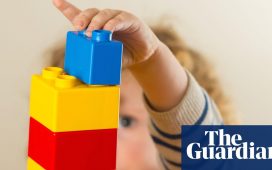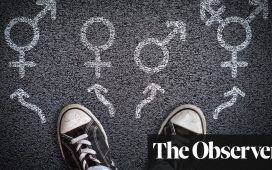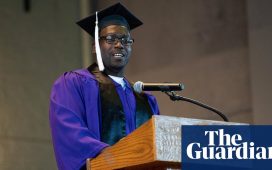
More time on social studies boosts kids’ reading scores, according to a new study–but more time on … [+]
More time on social studies in elementary school boosts reading scores—but more time on reading doesn’t. Here’s why that counter-intuitive finding makes sense.
Elementary schools spend more time on reading than any other subject. According to a new report from the Thomas B. Fordham Institute, teachers say they spend an average of two hours a day on “English language arts,” or ELA, and less than thirty minutes on social studies.
But the findings suggest those proportions should be reversed. The researchers analyzed reading scores for almost 7,000 students, tracing them from first to fifth grade, and also looked at how much time they reportedly spent on ELA and other subjects. By fifth grade, students who received an additional thirty minutes a day of social studies instruction got significantly higher reading scores than students who didn’t. That finding didn’t hold true for any other subject: not science, not math—and not ELA, or reading.
How can that be? It’s not that kids don’t need to be taught how to read—and many don’t get the kind of instruction they need. But especially after second grade, when it’s assumed that most kids have learned to decipher words, the “ELA block” is largely devoted to reading comprehension. That consists of having kids practice supposed skills, like “finding the main idea,” on texts at their individual “reading levels”—which in many cases are years below their grade levels. The point isn’t to learn anything of substance; it’s to master the “skills.”
As the report suggests, this approach is largely a waste of precious time. Comprehension doesn’t consist of skills that can be practiced to “mastery” and then applied to any written text. It depends primarily on how much knowledge and vocabulary the reader has relating to the topic.
That’s where social studies comes in. During the ELA block, students are reading fiction, or nonfiction on random topics they may know nothing about—and in any event the focus is on “skills,” not content. Social studies, at least theoretically, is aimed at building kids’ knowledge about history, geography, civics, and the like. The vocabulary that goes with that knowledge can equip students to understand texts on a variety of subjects. That gives them a better chance of understanding passages on reading tests, and therefore a better chance of answering comprehension questions correctly.
This explanation is bolstered by the fact that the only students in the study who did not get a significant boost from extra social studies were the most affluent, who are likely to pick up academic knowledge and vocabulary at home. Other students typically rely on school for that. And in fact, students from low-income families were one of the groups that benefitted most from social studies (the others were girls and kids from non-English-speaking homes).
But why did extra science instruction—which also focuses on content—fail to boost reading scores? The researchers speculated that science vocabulary “may be too specialized to impact literacy broadly.” Perhaps. But why then did the wealthiest 25% of students benefit from science instruction while less affluent students didn’t? The report doesn’t venture an explanation.
My theory: even children from highly educated families are unlikely to acquire science-related vocabulary at home—so learning it at school makes a difference. And maybe the other kids in the study didn’t have the threshold level of general academic knowledge and vocabulary that would enable new science-related vocabulary to stick. That doesn’t mean we should stop teaching science to kids from less educated families. Rather, we need to find better ways of doing it—perhaps in part by lessening the emphasis on hands-on science that dominates instruction in the elementary grades. There’s a place for that, but the focus can be so much on the erupting volcano, or whatever, that the actual content gets lost.
The support this study provides for social studies is even stronger than it appears, for several reasons:
· The estimates of time spent on social studies were based on teachers’ reports and could be overstated. A school schedule may allot thirty minutes to social studies. But often that time comes at the end of the day and ends up being devoted to other things—like reading comprehension skills—that teachers feel take priority. Especially in schools where scores are low, the administration may decree that social studies time needs to be devoted to reading or math. I don’t know of hard evidence on that, but I’ve heard of it repeatedly and seen it happen.
· Even when social studies content gets taught, teachers may put literacy “skills” in the foreground—particularly in schools where scores are low. In one classroom I visited, students were reading about the Silk Road, but the teacher’s question was about “the author’s purpose” in putting an illustration of a caravan into the text. (“Determining author’s purpose” is another comprehension “skill.”) Another teacher she told me she focused on “skills” over social studies content because the end-of-year reading test “isn’t going to be a quiz about where the Navajo people resided, or is this a sedimentary rock, or whatever.” This approach means students are less likely to engage with and retain information and vocabulary.
· Elementary social studies content is notoriously superficial and mundane. The early grades are dominated by topics like “All About Me,” or the function of street signs, or a smattering of disconnected subjects. One first-grade unit called “Everything Changes” included “vignettes of family history day, the first Americans, family life past and present, solving a conflict, going to school long ago, moving people and things, and sharing new ideas”—and there was no attempt to tie these things together. It’s unclear how much useful vocabulary children can acquire from this kind of curriculum—which generally avoids history altogether until third or fourth grade—but it’s apparently enough to boost reading scores.
· Even if social studies instruction does focus on content, it probably won’t match what’s on a standardized test. Test designers try to avoid topics that might be covered in school, lest some kids gain an unfair advantage. So your students might know all about Westward Expansion, but the test passages are about the Inuit and Amelia Earhart—and they might not yet have acquired enough general academic vocabulary to understand them.
I hope this new report leads schools to shift time from largely illusory comprehension skills to meaty content—which the report recommends. But some other recommendations appear to miss the mark.
While the authors note the development of new elementary literacy curricula that focus on building knowledge, they also observe that it can be hard to get schools and districts to adopt them. As an alternative, they recommend that teachers just spend more time on “a wide array of subject matter and knowledge-rich material.” But if that continues to be done unsystematically—clouds one day, zebras the next—it probably won’t have the desired effect. Nor will it work well if kids are all reading different books on different topics at different levels of complexity, which is the current standard practice.
Knowledge-building requires repeated exposure to the same or similar information, and it’s a gradual, cumulative process. Individual teachers can do something—especially if they organize texts around a specific topic and, by reading more complex texts aloud, give all kids access to the same content and vocabulary. But they’ll never build knowledge as effectively as a logically sequenced curriculum that spans grade levels.
The report’s recommendations are also muddled when it comes to testing. The authors urge that reading tests should match the content of the curriculum—but that could only happen if teachers follow a curriculum rather than simply adding books on topics each teacher, or student, chooses herself. And the report downplays the role of testing and No Child Behind in further marginalizing social studies over the past twenty years, overlooking an abundance of data to the contrary.
The bottom line: if kids dive into history and geography beginning in the early grades, they’re likely to become better readers—and when it’s presented engagingly, they thoroughly enjoy it. There are a few curricula out there that provide that kind of content, including some available for free through the Core Knowledge Foundation. Whether those subjects are taught under the rubric of “ELA” or “social studies” doesn’t really matter, as long as the content remains in the foreground and teachers ask questions that lead kids to think about it deeply—something they’re perfectly capable of doing.



